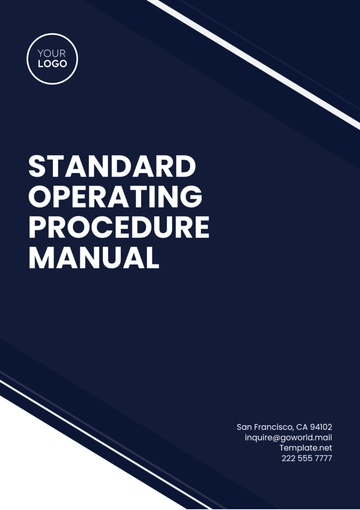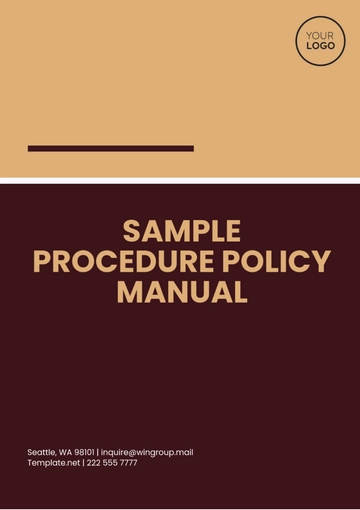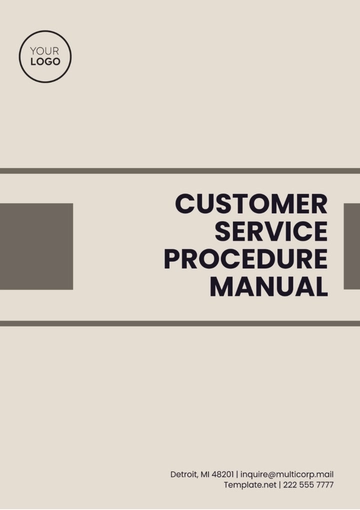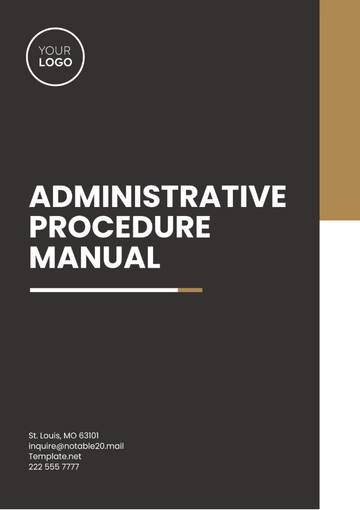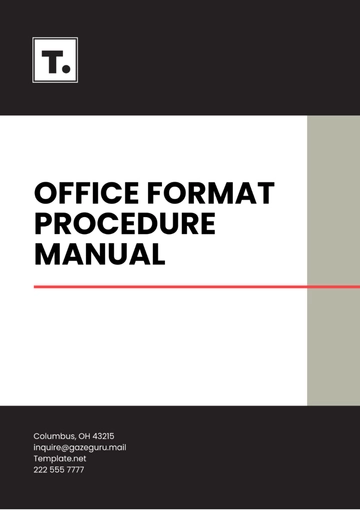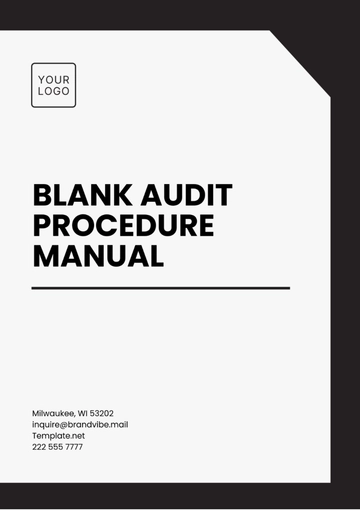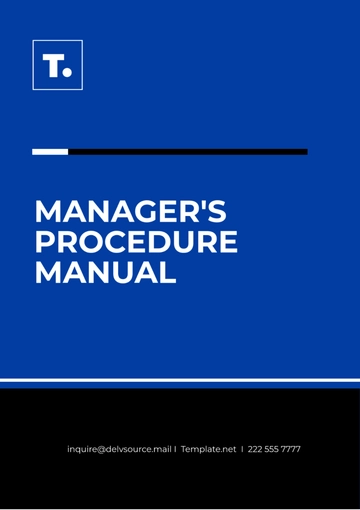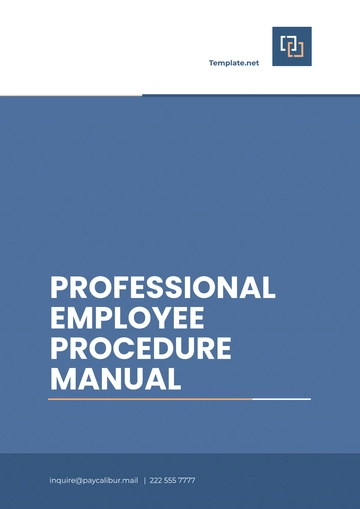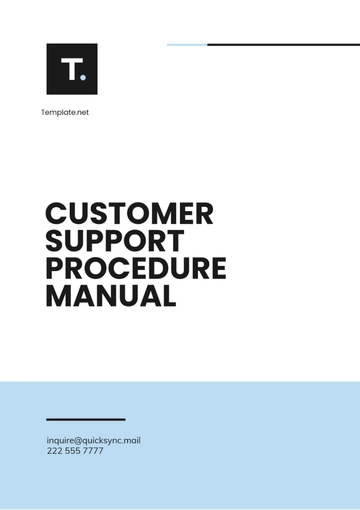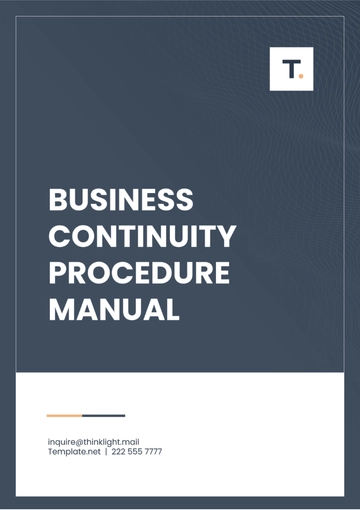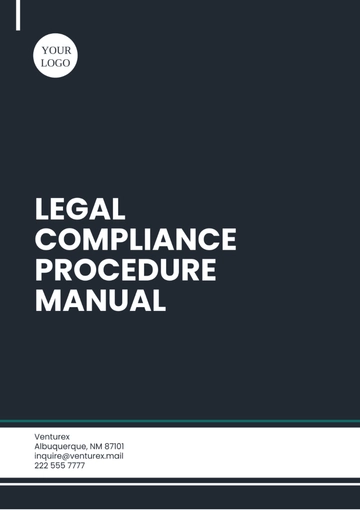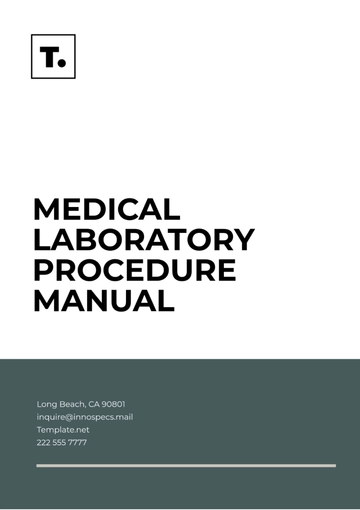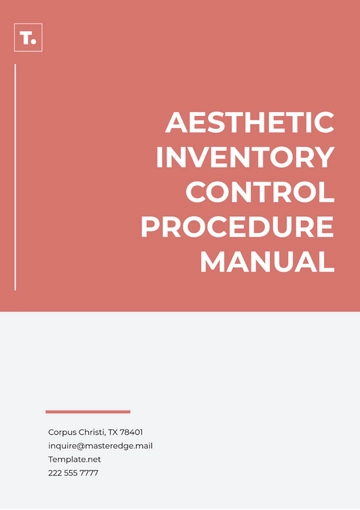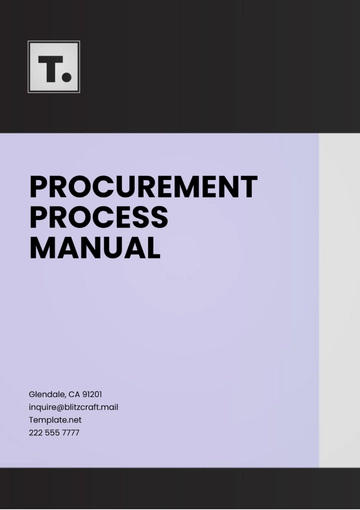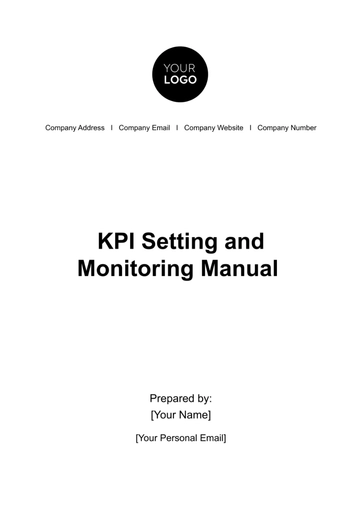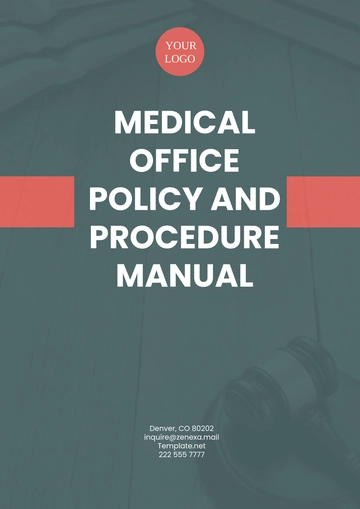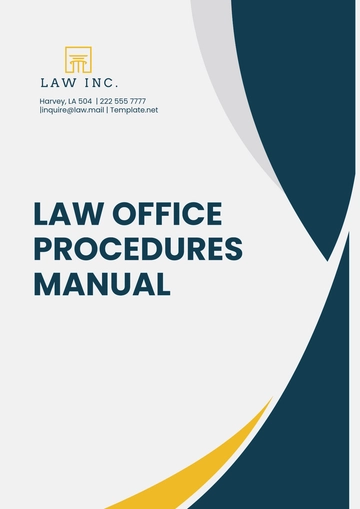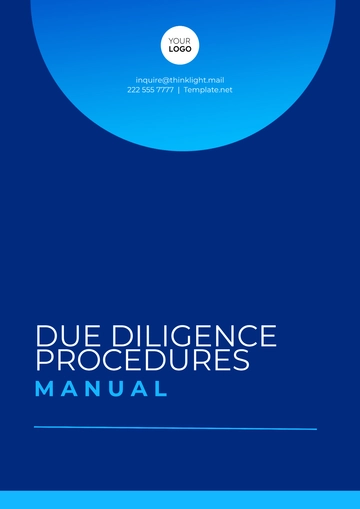Free Financial Cost Policy & Procedure Manual
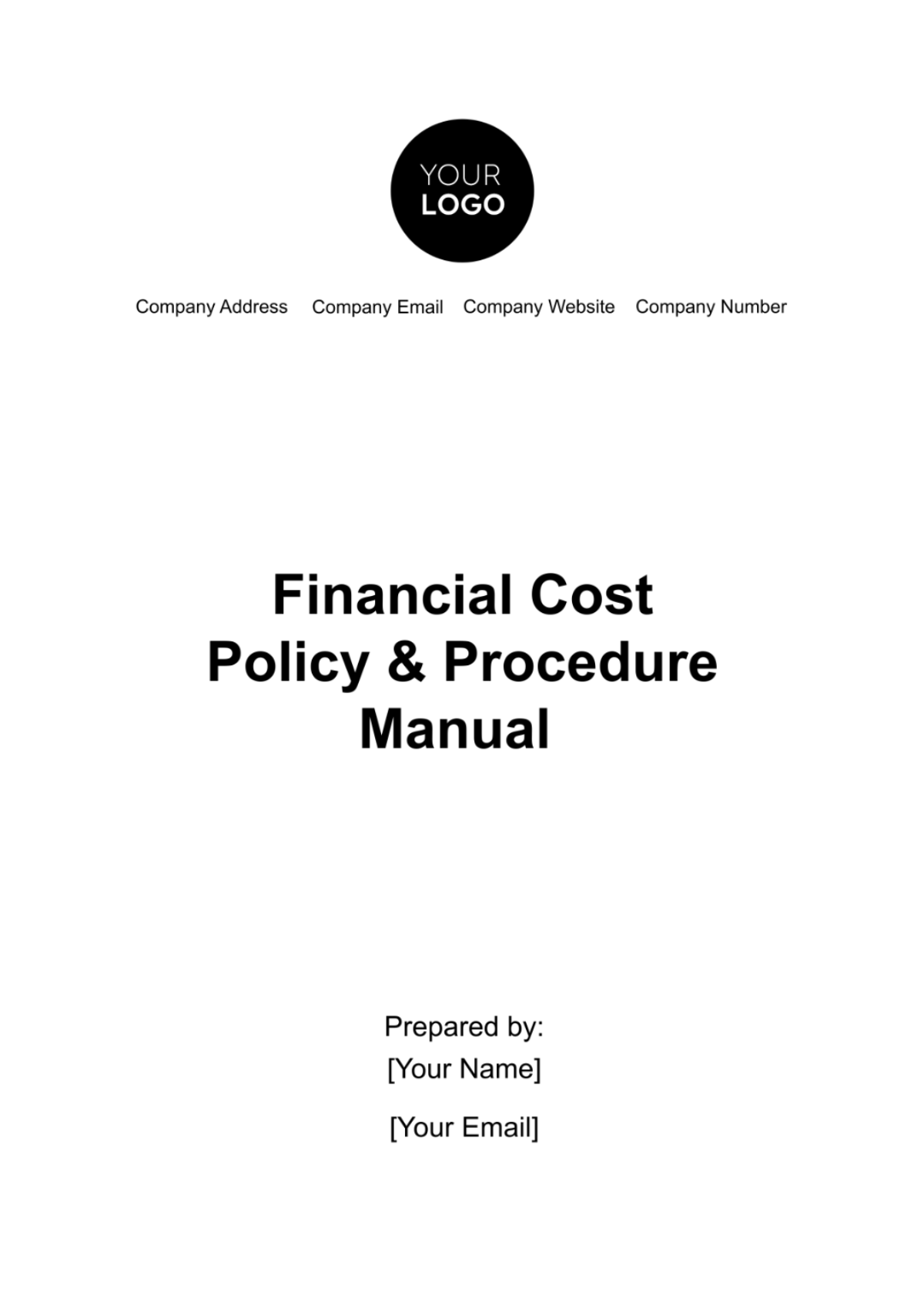
Introduction
This manual serves as a comprehensive guide for [Company Name]'s Financial Cost Policy & Procedure, emphasizing investment analysis, cost management, and portfolio management. Its purpose is to ensure the integrity, efficiency, and compliance of our financial operations.
Financial Investment Analysis
Investment Strategy
Objective: To optimize investment returns while maintaining a balance with risk parameters.
Approach: We adopt a diversified investment approach, encompassing various asset classes to mitigate risks associated with market volatility. Our strategy includes:
Regular analysis of market trends and economic indicators.
Adapting investment strategies based on market conditions.
Long-term planning complemented by short-term tactical adjustments.
Table 1: Asset Allocation Guidelines
Asset Class | Percentage Range |
Equities | 30-50% |
Fixed Income | 20-40% |
Alternatives | 10-30% |
Cash | 5-10% |
Risk Management
Risk Assessment: We employ a structured process to identify, assess, and mitigate financial risks. This includes:
Regular use of risk analysis software to model various market scenarios.
Implementing hedging strategies to offset potential losses.
Diversifying investments across sectors and geographies to reduce systemic risk.
Portfolio Review and Rebalancing
Frequency: Portfolios are reviewed quarterly or in response to significant market movements.
Procedure: The rebalancing process involves:
Analyzing current asset allocations against target benchmarks.
Making buy/sell decisions to realign portfolios with strategic objectives.
Considering tax implications and transaction costs in rebalancing decisions.
Compliance and Regulatory Adherence
Regulatory Bodies: We ensure strict adherence to regulations set by SEC, FINRA, and other financial authorities.
Audit and Reporting: Our compliance framework includes:
Regular internal audits to ensure adherence to financial regulations.
Preparing and submitting compliance reports as mandated by regulatory bodies.
Training staff on regulatory changes and compliance requirements.
Table 2: Compliance Checklist
Compliance Item | Frequency | Responsible Department |
Regulatory Filings | Annually | Legal |
Internal Audits | Bi-Annually | Finance |
Compliance Training | Quarterly | Human Resources |
Financial Cost Management
Cost Identification and Allocation
In this critical phase, we classify costs into direct and indirect categories, ensuring accurate financial tracking and reporting.
Direct Costs: These are expenses directly linked to specific projects or operational activities. Examples include salaries of project staff, materials, and equipment.
Indirect Costs: These costs are not directly tied to a specific project but are essential for running the business, like administrative expenses, utilities, and rent.
Table 1: Cost Allocation Examples
Cost Type | Allocation Basis | Examples |
Direct Costs | Project-Specific Tracking | Project materials, labor costs |
Indirect Costs | Company-wide Distribution | Rent, utilities, administration |
Cost Control and Reduction
Effective cost control and reduction are vital for maintaining financial health and competitiveness.
Strategies: We implement various strategies, including:
Regular review of expenditure against budget.
Negotiating better terms with suppliers.
Embracing cost-effective technological solutions.
Monitoring: Monitoring involves:
Monthly tracking of expenses against the budget.
Performing variance analysis to identify and address deviations.
Table 2: Cost Reduction Initiatives
Initiative | Expected Impact | Implementation Date |
Supplier Negotiation | 5% cost reduction | Q2 2050 |
Energy Efficiency | 10% utility savings | Q3 2050 |
Budgeting and Forecasting
Our budgeting and forecasting processes are pivotal in guiding financial decisions and strategies.
Process: We follow an annual budget cycle with quarterly revisions to adapt to market changes.
Tools: Advanced financial planning software is utilized to enhance accuracy and efficiency.
Table 3: Annual Budget Cycle
Phase | Quarter | Activities |
Planning | Q1 | Setting objectives, preliminary forecasts |
Implementation | Q2 | Budget allocation, departmental adjustments |
Review | Q3 | Performance review, adjustments |
Finalization | Q4 | Year-end review, final adjustments |
Reporting and Analysis
Robust financial reporting and analysis are the cornerstones of informed decision-making.
Financial Reports: We produce monthly income statements, balance sheets, and cash flow statements.
Analysis: Our analysis includes:
Comparing financial performance against budgets and historical data.
Identifying trends and areas for improvement.
Table 4: Financial Reporting Schedule
Report Type | Frequency | Distribution List |
Income Statement | Monthly | Senior Management |
Balance Sheet | Monthly | Board of Directors |
Cash Flow Statement | Quarterly | Investors |
Portfolio Management
Asset Selection
Effective asset selection forms the cornerstone of our portfolio management strategy. Our approach is grounded in a thorough analysis of various factors, ensuring a well-balanced and profitable portfolio.
Criteria: We select assets based on their performance history, risk profile, and market potential. This includes an analysis of historical returns, volatility, and the asset's role in the overall portfolio diversification.
Diversification Strategy: We aim to spread investments across different sectors and asset classes to minimize risk and maximize returns. This involves a mix of equities, fixed income, alternatives, and cash.
Table 1: Asset Selection Criteria
Asset Type | Criteria | Expected Return | Risk Level |
Equities | Market Capitalization, Sector Performance | High | High |
Fixed Income | Credit Rating, Maturity | Medium | Medium |
Alternatives | Market Trends, Innovation Potential | Variable | High to Low |
Cash | Liquidity Needs | Low | Low |
Performance Monitoring
Regular monitoring of portfolio performance is essential to ensure alignment with investment goals and risk tolerance.
Tools: We utilize sophisticated portfolio management software and financial analysis tools for real-time monitoring and decision-making support.
Metrics: Key performance metrics include Return on Investment (ROI), volatility measures, and comparison against relevant benchmarks.
Table 2: Performance Monitoring Metrics
Metric | Description | Frequency |
ROI | Return on Investment | Quarterly |
Alpha | Performance relative to benchmark | Annually |
Volatility | Asset price fluctuations | Monthly |
Client Communication
Effective communication with clients is paramount in portfolio management.
Frequency: We engage with clients quarterly or following significant market events.
Methods: Communication methods include personal meetings, electronic communications, and regular reports.
Table 3: Client Communication Schedule
Event | Communication Method | Detail Level |
Quarterly Review | Meeting/Report | Detailed Performance |
Market Event | Email/Call | Event Impact Analysis |
Annual Summary | Comprehensive Report | Yearly Performance |
Continuous Improvement
We believe in the continuous improvement of our portfolio management practices.
Feedback Loop: Regular feedback from clients and market trends helps refine our strategies.
Training: Ongoing training for portfolio managers is crucial to stay abreast of new market strategies and financial tools.
Table 4: Training and Development Plan
Training Topic | Frequency | Target Audience |
Market Analysis Techniques | Bi-Annually | Portfolio Managers |
Financial Software Updates | Annually | All Finance Staff |
Regulatory Compliance | Quarterly | Compliance Team |
Appendices
Appendix A: Financial Terms Glossary
This glossary provides definitions of key financial terms and acronyms used throughout this manual and in our day-to-day operations. It serves as a reference for all employees to ensure clarity and consistency in our financial communications.
Table 1: Financial Terms Glossary
Term/Acronym | Definition |
ROI | Return on Investment - the gain or loss generated on an investment relative to the amount of money invested. |
Alpha | A measure of performance on a risk-adjusted basis. |
Diversification | A risk management strategy that mixes a wide variety of investments within a portfolio. |
SEC | Securities and Exchange Commission - a U.S. government agency responsible for regulating the securities markets. |
FINRA | Financial Industry Regulatory Authority - a private American corporation that acts as a self-regulatory organization for member brokerage firms and exchange markets. |
Appendix B: Regulatory Compliance Checklist
A comprehensive checklist to ensure our financial operations are in compliance with relevant regulations and standards. This checklist is a tool for regular audits and reviews.
Table 2: Regulatory Compliance Checklist
Compliance Item | Required Action | Frequency | Responsible Department |
SEC Filings | Submit required documents | Annually | Legal |
FINRA Compliance | Review and adhere to FINRA guidelines | Ongoing | Compliance |
Internal Audit | Conduct internal financial reviews | Bi-Annually | Finance |
Anti-Money Laundering (AML) Checks | Perform AML checks | Quarterly | Compliance |
Data Security and Privacy | Ensure data protection measures are in place | Ongoing | IT Security |
Appendix C: Sample Financial Reports
This section includes examples of financial reports used in our analysis and decision-making processes. These templates are standardized to ensure consistency in financial reporting across the company.
Table 3: Sample Financial Report Formats
Report Type | Key Components | Purpose |
Income Statement | Revenues, Expenses, Net Income | To show profitability over a specific period. |
Balance Sheet | Assets, Liabilities, Shareholder's Equity | To display the company’s financial position at a specific point in time. |
Cash Flow Statement | Cash Flows from Operating, Investing, and Financing Activities | To provide insights into the company’s cash generation and spending. |
- 100% Customizable, free editor
- Access 1 Million+ Templates, photo’s & graphics
- Download or share as a template
- Click and replace photos, graphics, text, backgrounds
- Resize, crop, AI write & more
- Access advanced editor
Standardize cost management practices with Template.net's Financial Cost Policy & Procedure Manual Template. This editable, customizable manual outlines policies and procedures for managing financial costs. Crucial for ensuring consistency and compliance in financial operations, it serves as a comprehensive guide for businesses to control expenditures and manage financial resources prudently.

